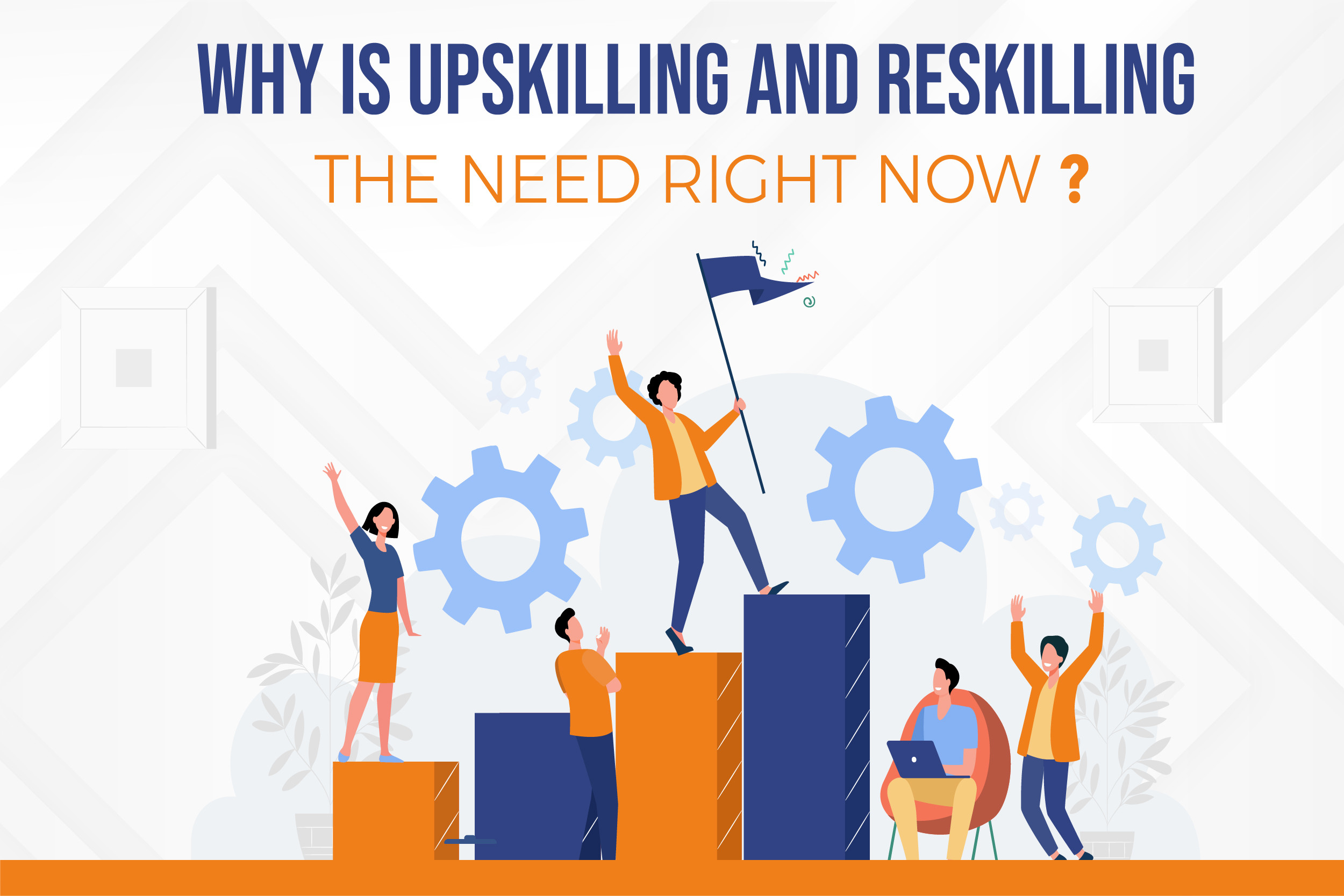
Why Is Upskilling And Reskilling The Need Right Now?
It is often believed that it is not appropriate for employees to upskill and reskill during times of crisis, but this belief is incorrect and for the right reasons. Organizations that conceive that employees should do the needful to address the challenges with the help of their existing skillsets and do not consider upskilling them are indubitably heading in the wrong direction.
This is particularly untrue now post the 2020 global virus outbreak since its consequences have been quite unequal across all businesses and functions. The economic environment has already seen significant changes as a result of the Covid-19 outbreak, and these developments have increased the need for fresh strategies for utilizing your current talent pool.
The pandemic's extraordinary number of suspended or laid-off workers and high rates of unemployment have probably been one of its most noticeable effects. Nevertheless, it is critical to invest in a workforce ready to adapt to market changes in a time when even massive businesses cannot afford to acquire fresh employees. This is why organizations are hugely investing in several Leadership Training Programs for employees.
Why Upskilling And Reskilling The Need At Present?
Reskilling and upskilling employees can help your firm acquire the skills necessary to maintain its competitiveness as the need for new competencies increases. Leadership Development Training boosts leadership skills among employees which is extremely crucial in this competitive market. According to the Forum, a change in the ratio of human to machine work might result in the loss of up to 85 million jobs by 2025. 97 million new jobs are anticipated to be generated at the same time as a result of ongoing digital transformation and technological advancements. The predicted proportion of essential abilities that will change is 40%, including the talent that can stay in their current jobs (data source: Talentguard). This highlights the urgent need for reskilling and upskilling in every position, division, and organization. Considering the past records a major change will occur by 2025, thus the time to begin is now.
Additionally, continuously looking for new abilities, filling in any skill gaps, and keeping a close eye out for possibilities to provide value to the organization is one of the most rigorous methods to achieve seniority or job stability at a firm.
How can you keep working toward success if you recently had to enact a hiring freeze to avoid layoffs? One method is to upskill and reskill your employees so that your workers may excel in their existing roles or take on additional responsibilities where the company requires help.
There is still work to be done on the projects you were recruiting for or had to fire. The skill sets required for specific jobs for which candidates have not yet been employed probably already exist in your business or can do so with a little skill upgrading. Your employees should ideally be able to wear a variety of hats whenever necessary. This makes your organization effective.
A Leadership Program is a comprehensive training program for the development of employees. It is also a very important skill most needed in today’s competitive market.
Therefore, let's discuss how reskilling differs from upskilling and how these two strategies may make your company more ready for future changes in the industry.
Reskilling versus upskilling
As per the Cambridge dictionary:
-
Upskilling is the process of learning new skills or of teaching workers new skills.
-
Reskilling is the process of learning new skills so you can do a different job, or of training people to do a different job.
Both of these approaches are equally effective for organizations to fight the long-lasting skills deficit as expected.
Searching for individuals with "adjacent talents"—those that are near to the new abilities your firm needs—means reskilling. It offers a lateral learning opportunity that can aid in the extensive reskilling needed by workers in the newly emerged workplace. According to the World Economic Forum, technological advancements would demand reskilling for 50% of all workers by 2025.
In contrast, a culture of upskilling entails educating staff members in new, sophisticated skills to fill talent gaps. It includes keeping your team members active in continual education and helps them progress along their present professional path. These workers may have been with your company for a long time and have a thorough awareness of both your business and your target market. According to LinkedIn Learning, 94% of workers would prefer to stay with a company longer if it actively supported their development.
Despite the fact that two-thirds of businesses feel that workforce development efforts would help close the skills gap, many are hesitant to act because of limited resources and a lack of technology that can assist internal efforts. If you cannot access appropriate talents, your organization may not be able to achieve its long-term objectives unless you take necessary actions internally. Arranging several Leadership Training Programs for employees can equip them with the necessary skills to take your organization to the next level.
How to approach upskilling and reskilling your employees?
Particularly if we're still struggling with layoffs and hiring freezes, this is a vital period where we need to pay attention to the company and examine the talents that are already present. By examining their present skill sets and finding transferable skills, we can increase the return on investment (ROI) for each employee that contributes to the company. Here are some methods to exercise your creativity right now.
Give admins more time back:
Eliminate as much of the administrative labor as you can when you require your staff to swiftly transition into new jobs and enroll internally. Automate the registration procedure for your trainees so they may fast and easily enroll in classes that will make them ready for their new jobs.
Share ideas:
With fewer individuals, collaborative learning is more crucial than ever. Since you want to repeat success, sharing best practices is crucial during periods of layoffs, freezes, and cutbacks. By enabling colleagues to educate one another, collaborative learning cultures offer upskilling and reskilling that is frictionless and natural to learners.
Embrace mobile learning:
At present, remote learning is not just for our children. Adult learners in the workforce are equally engrossed in their gadgets. For those of us who work remotely, smartphones and tablets are essential for on-the-job e-learning. These gadgets are another approach to connecting with your audience and drawing attention, even for brief bursts of microlearning. A mobile-friendly learning plan must be created by the forward-thinking L&D professional, especially when distance learning is required.
Final thoughts: How will organizations recover from The COVID-19 Blow?
You may still reach ambitious goals with a smaller staff by reskilling and upskilling your workers through individualized and collaborative learning opportunities, readily available cross-training, and mobile learning. These kinds of learning chances can help you discover your most nimble and devoted participants, who you'll want to hang onto post-COVID-19 ruins.
It's critical to keep top people around during challenging times so that, once it is over, you can scale up as soon as feasible with the greatest personnel on board. Your organization's top personnel will play a great part in assisting you to swiftly regain its previous glory by imparting their skills to new workers.
Take this opportunity to assess your company's internal talent and decide how to most effectively utilize it. Use this opportunity to start thinking about how you can enhance the talent development process so that your company can continue to smoothly scale its expansion.
